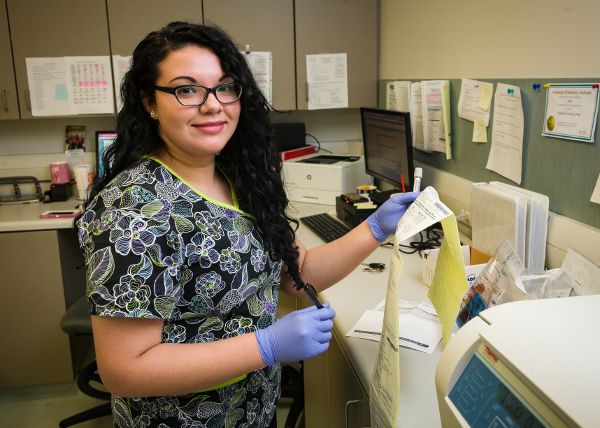Hodgkin’s Disease (Hodgkin’s Lymphoma) Overview
Hodgkin’s Lymphoma typically starts in a specific white blood cell called B-Lymphocytes, which are responsible for making antibodies to protect against bacteria and viruses. This type of cancer can start anywhere in your body, but is most commonly found in: lymph vessels, spleen, bone marrow, thymus, adenoids, and the digestive tract.
Symptoms
Common symptoms of Hogkin’s Lymphoma include a lump found in the groin area, neck, or under the arm. The lump is usually painless and may get larger over time. Other symptoms may include fever, night sweats, weight loss, and fatigue.
Risk Factors
There is a slight increase in risk factor for patients who have had the Epstein Barr Virus, which causes mononucleosis (mono). While Hodgkin’s Lymphoma can occur at any age, patients in their twenties or after the age of 55 are most common. Patients who have weakened immune system or take medications to suppress the immune system may also have a higher risk for Hodgkin’s Lymphoma.
Prevention
Because most of the known risk factors associated with this type of cancer can not be changed, prevention for this type of cancer is not possible at this time.
Diagnosis
If the swollen lymph nodes persist with time and antibiotic treatment, a biopsy of the affected node(s) may be taken to review in the lab. This biopsy will also help your doctor determine the type of cancer. Other images, such as an xray, CT, MRI or PET scan may be used to confirm the location of the cancer. A number of blood tests may also be performed to help give a full picture of signs, symptoms and potential location of the cancer.
Treatment
Treatment plans are specific to the type, stage, and location of the cancer, as well as the patient’s symptoms. Chemotherpy and Radiation therapy are the most common treatments for Hodgkin’s Lymphoma – sometimes one or both of them used together. If these treatments have not worked, some patients may also receive immunotherapy or a stem cell transplant







